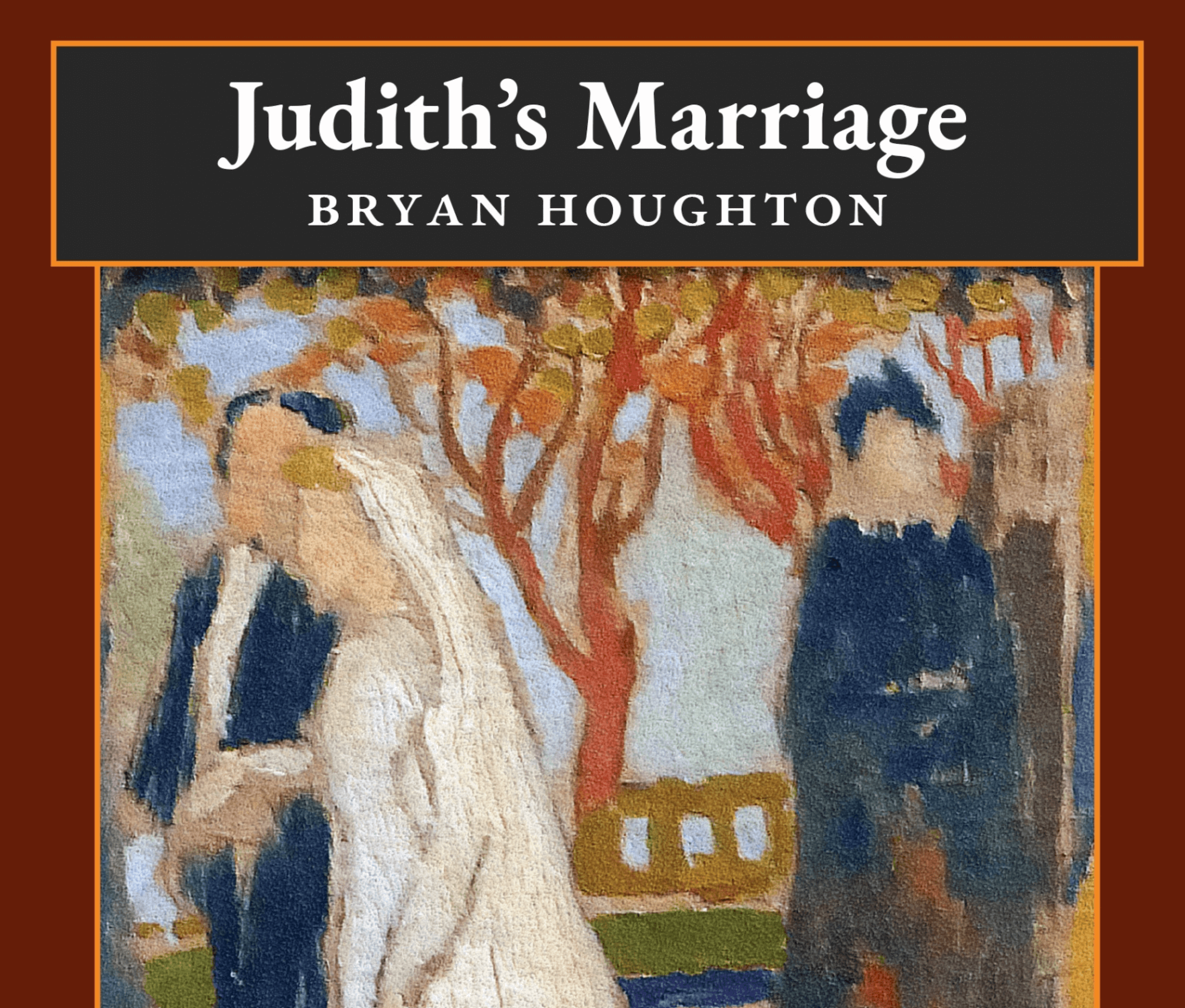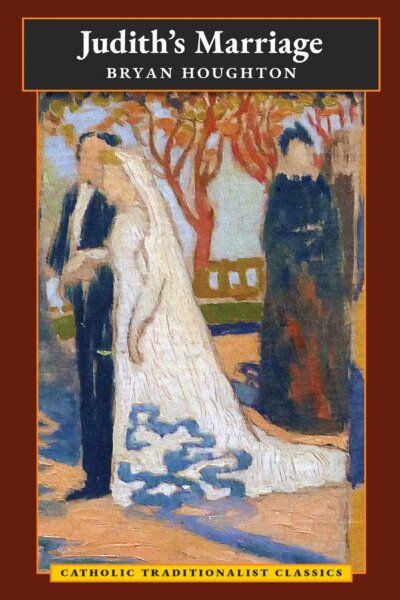This is an excellent book. It was so successful at portraying its heartrending themes that it made me feel physically sick. That makes it one of two novels to ever have affected me that way (the other was Rumer Godden’s In this house of Brede). Judith’s Marriage deserves a high ranking among novels dealing with the theology of marriage and family, while as a work of fiction treating explicitly traditionalist themes, it is almost unique in modern Catholic literature.
An Englishman and convert to Catholicism, Bryan Houghton was ordained a priest in 1940. In 1969 he resigned his parochial duties in Suffolk in protest against the introduction of the Novus Ordo. He subsequently moved to France, where, for the rest of his life, he continued to celebrate the old Mass with the approval of the bishop but with no pastoral ministry (although a congregation did grow up around him eventually). His autobiography, which I also reviewed recently, has also been republished by Angelico Press.
Fr. Houghton’s novel Judith’s Marriage was published in 1987. As he explains in the book’s foreword, it was his answer to the assumption that “the Catholic laity were a set of ignorant fools” and therefore required a reformed and relevant liturgy. But the worst insult, he says, is the “monstrous falsehood” that “most Catholics had a Sunday religion which in no way affected their weekday behavior.” This was “maintained by bishops and priests who, for the most part, have never been adult laymen.” “No words are adequate for me to express my admiration for the conscious faith and piety of my flock,” he writes of the various parishes he served over several decades. “Every day the Catholic workman had to put up with the jeers of his colleagues, as the more educated with their sneers. Every night they took their religion to bed with them.” Judith’s Marriage is Fr. Houghton’s manifesto on behalf of such Catholics, and an expose of the absurdity of the 1960’s claim that the Catholic faith and liturgy had to be brought “down” to the laity’s level.
Judith Milden, the heroine of our book, “was an exceptionally gifted girl.” Academically brilliant, the book opens with Judith in her final year at Oxford. The year is 1956. Her tutor was confident that with a minimum of work, she would get a First in history. But Judith seemed “uninterested in the two absorbing passions which ruin even the brightest girls: boys and religion.” And this book is about how she found both. When it opens, the “chatter among her girlfriends of their diverse conquests, of the details of their experiences in fornication, did not even nauseate her… it did not really interest her.” But Judith’s loose cousin Milli decides to set her up with a young man, Edmund Rougham. Milli’s apartment provides a perfect setting for them to spend a night together. There is a catch: Edmund turns out to be a principled Catholic (from an old recusant family, in fact), horrified to find himself in such a position. Judith’s listless attempts to seduce him result in his looking straight into her eyes and saying, “You don’t want to really, do you?” And with a “God bless you, Judith. You are as good as you are lovely,” Edmund departs. For Judith this is a revelation of a completely new kind of man and outlook on life.
Well, between one thing and another, this leads to a delightful romance in which Judith receives instruction in the Catholic faith and converts without telling Edmund. The pages in which Houghton portrays her instructions with a priest are utterly delightful and filled with insight. “Life is colossal fun if you get the hang of it,” the priest instructing her says in a Chestertonian spirit.
To do so, you have to hang from God. You cannot hang upwards. It’s what the materialist tries to do: he gets flat feet. Anyway, here’s a one-penny catechism… You know, the mediaevals did build those vast cathedrals for fun. Of course the glory of God entered in, but even that is funny: that such weird little creatures as you and me should be capable of glorifying God!
Edmund and Judith are married February 9th, 1957. They spend their honeymoon in Italy, where they meet Pope Pius XII. In the course of their audience, he comments to them,
You come from an old recusant family. Your family must have suffered much… It is easy to bear suffering oneself, from moment to moment. But to suffer in your wife, in your children, hopelessly, from generation to generation, this the English Catholics have done… The persecution of Catholics is finished in England, by the mercy of God, but to suffering there is no end. You will find the enemy within the Church, not without. We see it coming from our exalted position on the summit of the Rock. The mercy of God is so incomprehensible to man that it makes us suffer. Yet mercy it is.
And so the story of the modern persecution of Catholics from within the Church unfolds.
In January 1963 Edmund and Judith discuss the issue of tension between authority and tradition. Judith says, “Wouldn’t you admit there might come a point at which the faithful would have to resist the fallible, human legislation of the Church because it was not in harmony with her infallible truth?” Edmund hesitates: “But it would be well-nigh impossible to formulate a concrete example.” Judith disagrees. “Easy! I’ll give you three for a start, although I could give you a dozen: the jettisoning of the Immemorial Mass; the recognition of the validity of all ecclesial ministries or orders—notably Anglican and Lutheran; the licitness or artificial contraception. There you are.” Edmund roars with laughter and replies, “Of course, if that sort of thing happened, every Catholic would have to protest; but it’s impossible. You seem to forget that the Pope and bishops are just as much Catholic as you and I.”
As convert and cradle-Catholic they respond to the doctrinal and liturgical upheavals differently. At the center of the story lies the question of the “Immemorial Mass,” and “the pill,” along with Paul VI’s procrastination in condemning it. As we all know, what Edmund thinks impossible largely comes true as the decade tragically progresses. Edmund later comments,
I, as a cradle Catholic, have always looked at my religion from the outside, as a visible, hierarchical institution… Ah! Judith, my love, where is that visible hierarchical authority now? I have seen the Pope [Paul VI]. I know my bishop. I have witnessed what my parish priest is capable of doing… Perhaps I have not lost the Faith… what I do know is that I hate the visible, hierarchical church because she has deceived me by undermining her own authority. It was finally in her authority that I believed. Doubtless my religion was too ‘clerical.’ At least I have been cured of that. I hate the clergy to the core of my being.
Houghton also provides searing commentary on the spirit of aggiornamento: “That all Catholics, from the Pope to herself, should beat their own breasts was one thing, but to beat the Church’s breast was quite another. And if the Immaculate Spouse was to be rejuvenated and become fashionable, who was to be the plastic surgeon and the dress designer?” To Judith, “Instead of proclaiming the Church as One, Holy, Catholic and Apostolic, the council was making her appear divided, permissive, ecumenical and evolutionary.”
Faith and doubt, scandal and generosity, married love and unfaithfulness, are woven into a complex and profound tale of heroic sanctity on the part both of Judith and Edmund. Judith’s Marriage is admittedly quite raw at points, dealing as it does with contraception and questions surrounding continency in marriage; Milli’s conversations with Judith at various points in the book are also quite graphic. It is probably not a book for high-schoolers. However, Fr. Houghton’s willingness to include such passages makes the book powerful and realistic in a way that more circumspect “priestly” writing would never have been able to accomplish.
Judith’s Marriage engages many ecclesial dilemmas which remain relevant for today in a provocative and thoughtful way. It is a book which should challenge and inspire all Catholics seeking holiness. Though fictional, this novel is based on Fr. Houghton’s real-life experiences. As such, it provides an important angle on many issues at the heart of “traditionalism,” especially as a lay movement reacting to top-down impositions the faithful never asked for and did not want. Although one can dispute the believability of some of the novel’s events, or wonder how objective the author really was in his portrayal of the 1960s, it seems to me that Judith’s Marriage can be highly recommended for all adult Catholics, especially those with the care of souls and those committed to or considering the married state.



